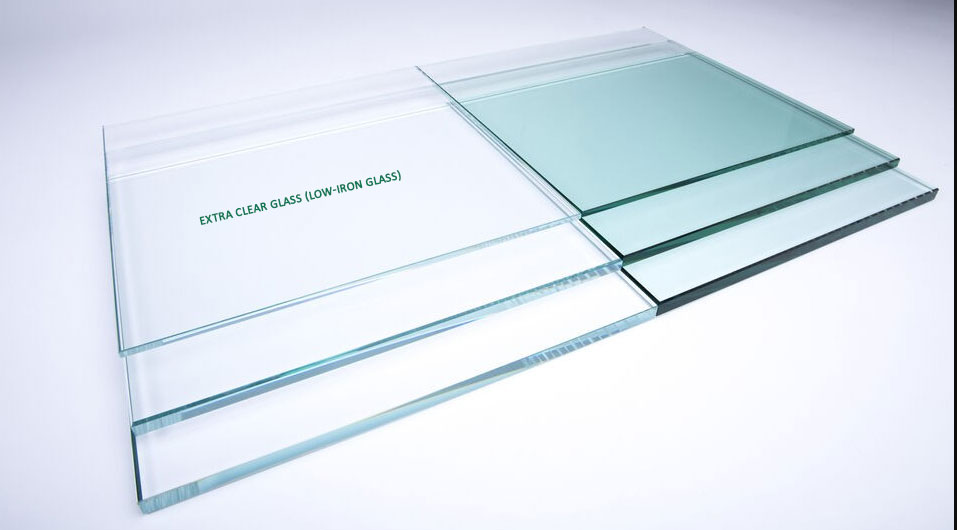Home » Blog » Extra Clear Glass (low-iron glass) for Furniture: Enhancing Aesthetic Appeal and Functionality
Posted on : 20-06-2024 Author : Gemini Sundar

Extra clear glass (Ultra clear glass), often referred to as low-iron glass, is gaining popularity in the furniture industry due to its superior clarity and aesthetic appeal. Unlike standard glass, which has a slight greenish tint, extra clear glass provides unparalleled transparency, making it an excellent choice for various furniture applications. This article explores the characteristics of extra clear glass, its benefits, and the key differences between normal and extra clear glass.
Extra clear glass is a type of glass that has significantly reduced iron content compared to normal glass. The reduced iron content minimizes the greenish tint typically associated with standard glass, resulting in a higher level of transparency and a clearer appearance. This clarity makes extra clear glass ideal for applications where the natural color and beauty of the underlying materials need to be showcased without distortion.
1. Enhanced Clarity: The primary characteristic of extra clear glass is its enhanced clarity. The reduction in iron content allows for greater light transmission and a more accurate representation of colors and details.
2. Transparency: Extra clear glass offers up to 91% light transmission, significantly higher than the 83-86% typically seen in standard glass.
3. Neutral Color: The absence of the greenish tint found in normal glass gives extra clear glass a neutral color, which is aesthetically pleasing and allows for true color visibility.
Benefits of Extra Clear Glass in Furniture
1. Aesthetic Appeal: Extra clear glass is preferred for high-end furniture pieces due to its clean and unobstructed view. It enhances the overall look of furniture, making it appear more luxurious and modern.
2. Showcasing Materials: It is ideal for applications where the natural beauty of materials such as wood, metal, or other decorative elements needs to be visible without color distortion.
3. Versatility: Extra clear glass is versatile and can be used in various furniture applications, including tabletops, shelving, display cabinets, and more.
4. Increased Light Transmission: The higher light transmission of extra clear glass contributes to brighter and more inviting interiors.
1. Iron Content:
- Normal Glass: Contains higher levels of iron oxide, which imparts a greenish tint.
- Extra Clear Glass: Has significantly lower iron content, resulting in reduced tint and higher clarity.
2. Color and Clarity:
- Normal Glass: Exhibits a noticeable green tint, especially when viewed from the edges.
- Extra Clear Glass: Offers a nearly colorless appearance with enhanced transparency.
3. Light Transmission:
- Normal Glass: Allows 83-86% light transmission.
- Extra Clear Glass: Provides up to 91% light transmission, allowing more natural light to pass through.
4. Aesthetic Quality:
- Normal Glass: Suitable for general applications where slight color distortion is acceptable.
- Extra Clear Glass: Ideal for premium furniture and applications where true color and clarity are essential.
5. Cost:
- Normal Glass: Generally less expensive due to standard manufacturing processes.
- Extra Clear Glass: Typically costs more due to the additional processing required to reduce the iron content and achieve higher clarity.
Applications of Extra Clear Glass in Furniture
1. Tabletops: Extra clear glass tabletops offer a pristine view of the base materials, whether it’s a wooden frame, a metal structure, or intricate designs.
2. Shelving: Used in shelving units, extra clear glass provides a clean and unobtrusive display area, making it perfect for showcasing collectibles or retail products.
3. Display Cabinets: In display cabinets, extra clear glass enhances the visibility of the items inside, making it ideal for use in stores, museums, or at home.
4. Partitions: Extra clear glass partitions are used in offices and homes to create a sense of openness while maintaining privacy without altering the color perception of the surroundings.
Extra clear glass offers numerous advantages over normal glass, particularly in furniture applications where clarity and aesthetic appeal are crucial. Its enhanced transparency, higher light transmission, and neutral color make it the preferred choice for high-end and modern furniture designs. While it comes at a higher cost, the benefits of extra clear glass in terms of appearance and functionality often outweigh the additional expense, making it a worthwhile investment for those seeking to create stunning and elegant interiors.